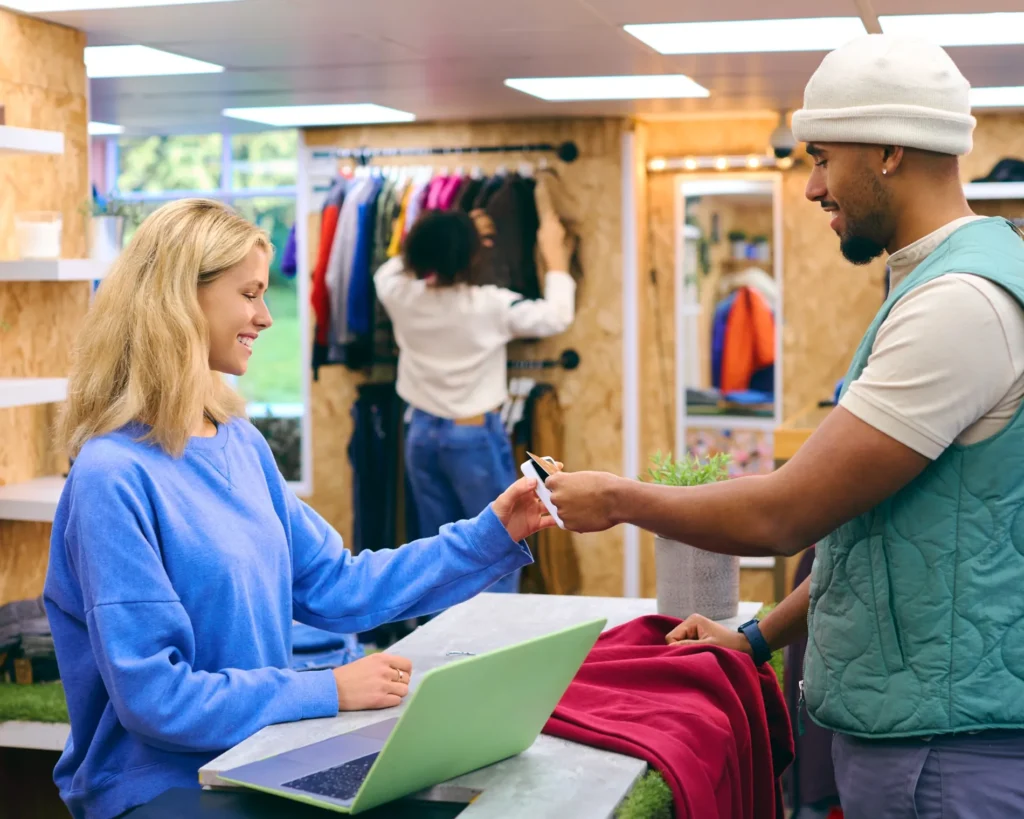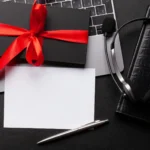Trade show success hinges on creating memorable connections with potential customers, and trade show promotional items that work serve as powerful tools for achieving this goal. Australian businesses investing in exhibitions understand that strategic promotional product selection can transform booth visits into lasting business relationships. The right promotional items not only attract visitors to your stand but also ensure your brand remains top-of-mind long after the event concludes.
Effective trade show marketing requires more than simply displaying products—it demands creating experiences that resonate with attendees. Trade show marketing strategies Australia businesses employ increasingly focus on promotional items that provide genuine value while reinforcing brand messages. These tangible touchpoints create emotional connections that digital marketing alone cannot achieve, making them essential components of successful exhibition campaigns.
The Australian trade show landscape presents unique opportunities for businesses to showcase their offerings to highly targeted audiences. From major industry exhibitions in Sydney and Melbourne to specialised conferences across Queensland, promotional items serve as conversation starters that facilitate meaningful business connections. Understanding which items generate the best results can significantly impact your exhibition return on investment.
Understanding the Australian Trade Show Landscape
Australia’s trade show industry represents a significant component of the nation’s business-to-business marketing ecosystem, with major exhibitions attracting thousands of qualified prospects annually. The Melbourne Convention and Exhibition Centre, Sydney’s International Convention Centre, and Brisbane Convention & Exhibition Centre host hundreds of industry-specific events that bring together decision-makers from across the Asia-Pacific region.
Major Australian trade shows span diverse industries, from mining and agriculture to technology and healthcare. Events like the Australian International Mining Exhibition, Food & Hotel Asia, and CeBIT Australia create concentrated environments where businesses can connect with their ideal customers. These exhibitions typically attract attendees who are actively seeking solutions, making them prime opportunities for promotional product distribution.
Industry statistics reveal that Australian trade show attendance has grown consistently over the past decade, with business decision-makers increasingly viewing exhibitions as essential for staying current with industry trends. The average trade show attendee visits exhibitions with specific purchasing intentions, spending considerable time researching exhibitors before attending. This pre-qualified audience represents exceptional value for businesses investing in strategic promotional product campaigns.
Seasonal considerations play crucial roles in Australian trade show planning, with peak exhibition periods occurring during autumn and spring months when weather conditions favour travel and attendance. Understanding these patterns helps businesses plan promotional product procurement and distribution strategies that align with exhibition schedules while ensuring adequate lead times for customisation and delivery.
The unique characteristics of Australian business culture emphasise relationship-building and authentic connections, making promotional products particularly effective in this market. Australian professionals appreciate practical, high-quality items that demonstrate genuine value rather than cheap giveaways that may reflect poorly on brand perception.
The Psychology Behind Effective Trade Show Promotional Items
Understanding visitor behaviour at trade shows reveals why certain promotional items succeed while others fail to create lasting impressions. Attendees typically experience sensory overload as they navigate crowded exhibition halls filled with competing messages and visual stimuli. Exhibition booth promotional products that cut through this noise must appeal to fundamental psychological principles that govern human decision-making and memory formation.
The reciprocity principle plays a crucial role in promotional product effectiveness, as recipients feel compelled to return favours when they receive valuable gifts. This psychological trigger creates positive associations with brands that provide useful promotional items, increasing the likelihood of future business engagement. Research demonstrates that promotional products activate the same neural pathways associated with gift-giving, generating positive emotions that enhance brand recall.
Memory retention through promotional items occurs through multiple sensory channels that reinforce brand messages. The tactile experience of handling promotional products creates stronger memory traces than visual or auditory stimuli alone. When attendees use promotional items after exhibitions, they experience repeated brand exposure that strengthens recognition and recall over time.
Brand recall statistics consistently demonstrate the superior effectiveness of promotional products compared to traditional advertising methods. Studies show that promotional product recipients can recall advertiser names at rates exceeding 80%, significantly higher than digital or print advertising recall rates. This enhanced memory retention translates directly into increased brand awareness and consideration during purchasing decisions.
Emotional connections formed through promotional products extend beyond the initial gift-giving moment to create lasting brand associations. Recipients develop positive feelings toward brands that provide useful, high-quality promotional items, influencing their perception of company values and capabilities. These emotional bonds often prove more influential than rational product comparisons when making purchasing decisions.
The psychological impact of promotional products also extends to social proof mechanisms, as recipients often display or use items in professional settings where colleagues can observe brand associations. This secondary exposure amplifies promotional product effectiveness by creating additional brand impressions among qualified prospects who may not have attended the original exhibition.
Essential Trade Show Promotional Items That Generate Results
Selecting promotional items that deliver measurable results requires understanding which products provide optimal combinations of utility, brand visibility, and cost-effectiveness. Conference giveaway ideas that consistently perform well share common characteristics: practical functionality, professional appearance, and sufficient branding space to ensure clear brand identification.
High-impact conference bags and totes represent the cornerstone of successful trade show promotional campaigns. Conference bags serve dual purposes by providing immediate utility for carrying exhibition materials while creating mobile advertisements that generate brand exposure throughout the event venue. Quality conference bags continue providing value long after exhibitions conclude, ensuring extended brand visibility in professional environments.
Top-Performing Trade Show Promotional Categories
- Professional conference bags: Durable totes and backpacks that attendees use throughout events and beyond
- Premium drinkware: Insulated bottles and travel mugs that provide daily utility and brand exposure
- Technology accessories: Power banks, USB drives, and phone accessories that address modern professional needs
- Quality branded apparel: Polo shirts, jackets, and accessories that create walking advertisements
- Memorable novelty items: Unique products that spark conversations and create lasting impressions
Branded drinkware for lasting impression consistently ranks among the most effective promotional products due to daily usage patterns and high visibility in professional settings. Promotional drinkware items like insulated travel mugs and water bottles provide practical value while ensuring regular brand exposure during coffee breaks, meetings, and commutes.
Practical tech accessories address the modern professional’s need for connectivity and productivity. Items like portable phone chargers, wireless charging pads, and USB hubs solve real problems while providing premium branding opportunities. These products often command higher perceived values than their actual costs, creating positive brand associations that influence purchasing decisions.
Quality branded apparel transforms recipients into brand ambassadors who promote your company through their professional activities. Branded apparel Australia options like polo shirts, jackets, and accessories create professional appearances while ensuring consistent brand visibility in workplace environments.
Cost-effectiveness analysis reveals that investing in fewer, higher-quality promotional items typically generates better results than distributing large quantities of low-value products. Premium promotional items create positive brand associations that reflect company quality standards, while cheap alternatives may damage brand perception and waste marketing investments.
The most successful trade show promotional campaigns combine multiple product categories to create comprehensive brand experiences. Pairing practical items like conference bags with premium drinkware and tech accessories ensures broad appeal while maximising brand exposure opportunities across different usage scenarios.
Strategic Booth Attraction Techniques Using Promotional Products
Creating compelling booth attractions requires strategic promotional product placement and presentation that draws attendees from busy exhibition aisles. Eye-catching display strategies utilise promotional products as visual magnets that communicate value propositions before visitors reach your booth space. Effective displays showcase promotional items alongside product demonstrations to create integrated brand experiences.
Interactive promotional item demonstrations allow potential customers to experience product quality firsthand while engaging with your brand message. Setting up demonstration stations where attendees can test promotional products creates natural conversation opportunities that facilitate relationship building. These interactions provide valuable insights into customer preferences while generating qualified leads.
Proven Booth Attraction Methods
- Limited-time promotional offers: Creating urgency through exclusive exhibition-only promotional items
- Interactive product demonstrations: Allowing attendees to experience promotional item quality firsthand
- Strategic visual placement: Positioning promotional items to create compelling booth focal points
- Conversation starter techniques: Using unique promotional items to initiate meaningful discussions
- Crowd-drawing activities: Implementing promotional item-based contests and giveaways
Creating buzz with limited-time offers generates excitement and urgency that motivates booth visits. Exclusive promotional items available only during exhibition hours create scarcity that drives immediate action. These special offers often become talking points that generate word-of-mouth promotion throughout the event.
Using promotional items as conversation starters requires selecting products that naturally prompt questions or comments. Unique or innovative promotional items create curiosity that leads to meaningful discussions about your company’s capabilities and offerings. Promotional giveaways that reflect your industry expertise demonstrate thought leadership while facilitating business conversations.
Crowd-drawing techniques leverage promotional products to create visible activity that attracts additional visitors. Contests, demonstrations, and interactive activities centred around promotional items generate foot traffic while providing opportunities to collect contact information and qualify prospects. These activities create positive associations with your brand while building exhibition momentum.
Strategic timing of promotional item distribution maximises impact while managing inventory effectively. Offering different promotional items at various times throughout the exhibition encourages repeat visits while ensuring broad exposure to your complete product range. This approach also allows for targeted distribution based on visitor qualification levels.
Visitor Engagement Strategies Through Smart Product Selection
Effective visitor engagement requires promotional products that facilitate meaningful conversations while qualifying prospects for follow-up activities. Qualifying leads through promotional item distribution involves strategic selection of products that appeal to your ideal customer profile while encouraging information exchange. This approach ensures promotional product investments generate measurable business results.
Creating memorable brand experiences through promotional products requires understanding how different items influence visitor perceptions and behaviours. Premium promotional products communicate quality and professionalism, while practical items demonstrate understanding of customer needs. The combination creates comprehensive brand impressions that influence purchasing decisions.
Encouraging booth dwell time through promotional product interactions provides opportunities for deeper relationship building and needs assessment. Interactive promotional displays, product demonstrations, and educational materials keep visitors engaged while sales teams gather qualification information. Extended interactions increase the likelihood of generating qualified leads and future business opportunities.
Facilitating meaningful conversations requires promotional products that naturally lead to business discussions. Industry-specific promotional items demonstrate expertise while providing conversation frameworks that guide discussions toward your company’s capabilities. These targeted approaches ensure promotional product investments support broader sales objectives.
Building rapport with prospects through promotional product selection requires understanding cultural preferences and professional expectations. Australian business professionals appreciate practical, high-quality items that reflect genuine value rather than superficial marketing gestures. This cultural awareness ensures promotional products enhance rather than hinder relationship-building efforts.
The most effective visitor engagement strategies combine promotional product distribution with systematic lead qualification processes. Using promotional items as incentives for completing contact forms, participating in surveys, or scheduling follow-up meetings ensures promotional product investments generate measurable business outcomes.
Budget-Conscious Promotional Item Selection for Maximum ROI
Maximising promotional product return on investment requires strategic budget allocation that balances quality, quantity, and target audience appeal. Cost-per-impression calculations help businesses evaluate promotional product effectiveness by comparing total campaign costs with estimated brand exposure generated over product lifespans. This analytical approach ensures marketing budgets generate optimal results.
Bulk ordering strategies can significantly reduce per-unit promotional product costs while ensuring adequate inventory for comprehensive exhibition campaigns. However, businesses must balance cost savings with storage requirements and product relevance to avoid investing in items that may become obsolete or inappropriate for future events.
Balancing quality with quantity represents a critical decision point that influences promotional product campaign effectiveness. Higher-quality items typically generate better brand associations and longer usage periods, resulting in superior cost-per-impression ratios despite higher initial investments. This approach often proves more cost-effective than distributing large quantities of low-value items.
Seasonal pricing considerations affect promotional product procurement costs, with peak exhibition periods often commanding premium pricing due to increased demand. Planning promotional product orders during off-peak periods can generate significant cost savings while ensuring adequate lead times for customisation and delivery.
Measuring return on investment requires establishing clear metrics that connect promotional product distribution with business outcomes. Tracking lead generation, sales conversions, and brand awareness improvements provides quantifiable data that justifies promotional product investments and guides future campaign optimisation.
The most cost-effective promotional product strategies focus on items that provide multiple usage opportunities and extended brand exposure periods. Products that recipients use regularly in professional settings generate ongoing brand impressions that compound over time, delivering superior return on investment compared to single-use items.
Post-Event Follow-Up Success Using Promotional Items
Maintaining brand visibility after exhibitions requires promotional products that continue generating value and brand exposure in recipients’ daily professional activities. Maintaining brand visibility after the event ensures exhibition investments continue producing results long after booth dismantling. Strategic promotional product selection creates ongoing touchpoints that support follow-up sales activities.
Follow-up gift strategies utilise additional promotional products to reinforce relationships established during exhibitions while providing reasons for continued contact. Sending complementary promotional items to qualified prospects demonstrates continued interest while providing additional brand exposure opportunities. These follow-up gifts often prove instrumental in converting exhibition leads into customers.
Nurturing leads with additional promotional items requires understanding prospect preferences and business needs identified during exhibition interactions. Targeted promotional product selection demonstrates attentiveness to customer requirements while providing practical value that supports ongoing relationship development. This personalised approach significantly improves lead conversion rates.
Measuring long-term brand impact requires tracking promotional product usage and brand recall over extended periods following exhibitions. Surveys, follow-up interviews, and sales tracking provide insights into promotional product effectiveness while identifying opportunities for campaign improvement. This data supports future promotional product investment decisions.
Creating lasting business relationships through promotional products requires consistent quality and relevance that reflects your company’s professional standards. Recipients form lasting impressions based on promotional product quality, making it essential to maintain high standards that reinforce positive brand associations over time.
The most successful post-event strategies integrate promotional products with comprehensive follow-up campaigns that include personalised communications, valuable content, and relevant business solutions. This holistic approach ensures promotional products support broader relationship-building objectives while generating measurable business results.
Common Trade Show Promotional Item Mistakes to Avoid
Understanding common promotional product mistakes helps businesses avoid costly errors that waste marketing budgets while potentially damaging brand reputation. Poor quality items that damage brand reputation represent the most serious promotional product mistake, as recipients judge companies based on the quality of promotional items they receive. Cheap, poorly made products create negative brand associations that can persist long after exhibitions conclude.
Critical Mistakes That Undermine Campaign Success
- Selecting irrelevant promotional products: Choosing items that don’t align with audience needs or interests
- Over-spending on low-impact items: Investing in expensive products that provide minimal brand exposure
- Inadequate quantity planning: Running out of promotional items during peak exhibition periods
- Inconsistent brand presentation: Using promotional items that don’t align with overall brand messaging
- Lack of strategic distribution: Failing to target promotional items to qualified prospects
Irrelevant promotional product selection occurs when businesses choose items based on cost or availability rather than audience appeal and utility. Products that recipients don’t use or value generate minimal brand exposure while wasting marketing investments. Understanding target audience preferences and professional needs ensures promotional product relevance and effectiveness.
Over-spending on low-impact items represents a common budget allocation error that reduces overall campaign effectiveness. Expensive promotional products that provide limited brand exposure or short usage periods deliver poor return on investment compared to practical items that generate ongoing brand impressions. Strategic cost-benefit analysis prevents these costly mistakes.
Inadequate quantity planning can undermine exhibition success by creating negative impressions when promotional items run out during peak attendance periods. Accurate attendance forecasting and strategic distribution planning ensure adequate inventory while avoiding excess costs associated with over-ordering.
Lack of brand consistency across promotional products creates confused brand messages that dilute marketing effectiveness. All promotional items should align with established brand guidelines and messaging to create cohesive brand experiences that reinforce key value propositions.
Industry-Specific Promotional Product Strategies
Different industries require tailored promotional product approaches that address specific audience needs, professional environments, and business objectives. Healthcare sector approaches must consider hygiene requirements, professional appearance standards, and practical utility in medical environments. Promotional products for healthcare professionals should emphasise cleanliness, functionality, and professional aesthetics.
Targeted Industry Strategies
- Technology companies: Focus on innovative tech accessories and digital-age solutions
- Construction and manufacturing: Emphasise durability, safety, and practical workplace utility
- Professional services: Select premium items that reflect sophistication and expertise
- Retail businesses: Choose customer-facing items that enhance shopping experiences
- Healthcare providers: Prioritise hygiene, functionality, and professional appearance
Technology industry tactics leverage promotional products that demonstrate innovation while providing practical value to tech-savvy audiences. Items like wireless chargers, smart accessories, and cutting-edge gadgets appeal to technology professionals while showcasing company innovation capabilities. These products often generate significant interest and conversation at technology exhibitions.
Construction and manufacturing sector strategies focus on durable, practical promotional products that withstand demanding work environments. Safety equipment, tools, and industrial-grade items demonstrate understanding of industry challenges while providing genuine utility. These products often receive extended use in professional settings, generating ongoing brand exposure.
Professional services require promotional products that reflect sophistication and expertise while providing value to business decision-makers. Premium items like leather portfolios, executive accessories, and high-quality office products create positive brand associations among professional audiences. These products support relationship-building efforts with high-value prospects.
Retail business strategies often focus on customer-facing promotional products that enhance shopping experiences while building brand loyalty. Items that customers can use during shopping trips or in their daily lives create positive associations with retail brands while generating ongoing exposure.
Measuring Success: KPIs for Trade Show Promotional Campaigns
Establishing clear key performance indicators ensures promotional product campaigns generate measurable business results while providing data for future optimisation. Lead generation metrics track the number and quality of prospects generated through promotional product distribution, providing direct connections between promotional investments and business outcomes.
Brand awareness measurement requires systematic tracking of recognition improvements and message retention among target audiences. Pre- and post-exhibition surveys provide quantitative data about brand recall and perception changes attributable to promotional product campaigns. These metrics demonstrate promotional product effectiveness while identifying areas for improvement.
Cost-per-lead calculations help businesses evaluate promotional product campaign efficiency by dividing total campaign costs by the number of qualified leads generated. This metric enables direct comparison with other marketing channels while supporting budget allocation decisions for future exhibitions.
Post-event survey insights provide qualitative feedback about promotional product effectiveness, recipient satisfaction, and brand perception improvements. These surveys often reveal unexpected benefits and usage patterns that inform future promotional product selection and distribution strategies.
Long-term customer acquisition tracking connects promotional product distribution with eventual sales conversions, providing ultimate measures of campaign success. This data supports promotional product investment justification while identifying most effective product categories and distribution strategies.
The most comprehensive measurement approaches combine quantitative metrics with qualitative feedback to create complete pictures of promotional product campaign effectiveness. This data-driven approach ensures continuous improvement while maximising return on promotional product investments.
Future-Proofing Your Trade Show Marketing Strategy
Emerging trends in promotional products reflect changing consumer preferences, technological advances, and environmental consciousness that influence purchasing decisions. Sustainable product options represent the fastest-growing segment in promotional product marketing as businesses and consumers increasingly prioritise environmental responsibility. Eco-friendly materials and sustainable manufacturing processes appeal to environmentally conscious audiences while demonstrating corporate social responsibility.
Digital integration with physical promotional products creates new opportunities for enhanced engagement and tracking. QR codes, NFC technology, and app integration transform traditional promotional items into interactive brand experiences that provide valuable usage data while extending engagement beyond initial distribution.
Personalisation trends extend beyond simple name imprinting to encompass customised product configurations, individual preferences, and targeted messaging. Advanced personalisation creates stronger emotional connections with recipients while improving campaign effectiveness through increased relevance and perceived value.
Adapting to changing attendee expectations requires understanding evolving preferences for quality, sustainability, and technological integration. Modern trade show attendees expect promotional products that reflect contemporary values while providing genuine utility in their professional and personal lives.
The most successful future-proofing strategies balance innovation with proven promotional product principles, ensuring campaigns remain effective while adapting to changing market conditions. This approach maintains promotional product relevance while supporting long-term business objectives.
Building lasting brand recognition through strategic promotional product campaigns requires consistent execution, quality maintenance, and continuous optimisation based on performance data. Australian businesses that invest in well-planned promotional product strategies create powerful marketing assets that generate ongoing brand exposure and business opportunities long after exhibitions conclude.
For businesses seeking to enhance their trade show presence through strategic promotional product campaigns, partnering with experienced suppliers ensures access to quality products, professional design services, and reliable distribution support that maximises campaign effectiveness and return on investment.




 sales@hypepromotions.com.au
sales@hypepromotions.com.au (07) 3192 9855
(07) 3192 9855








